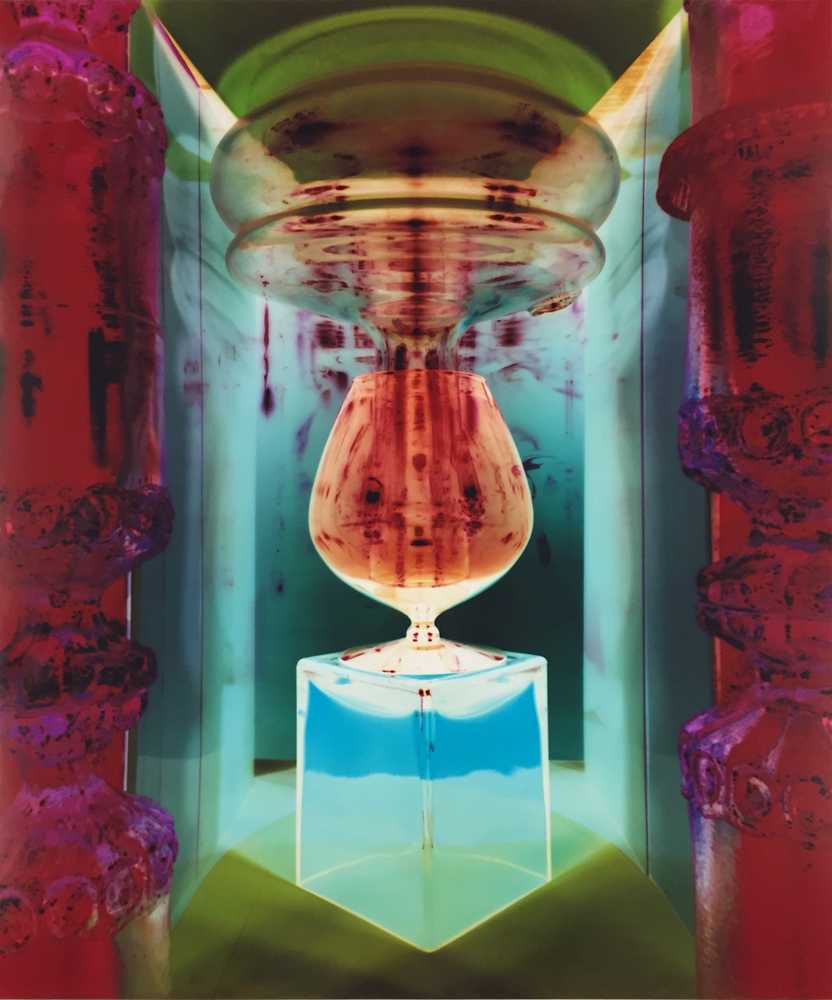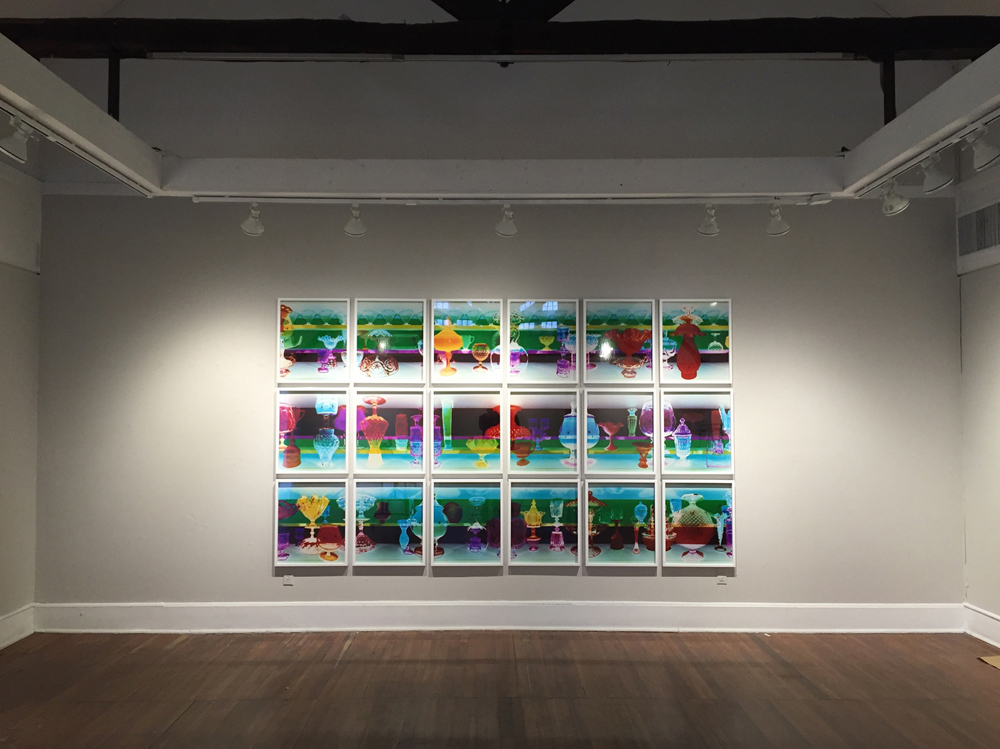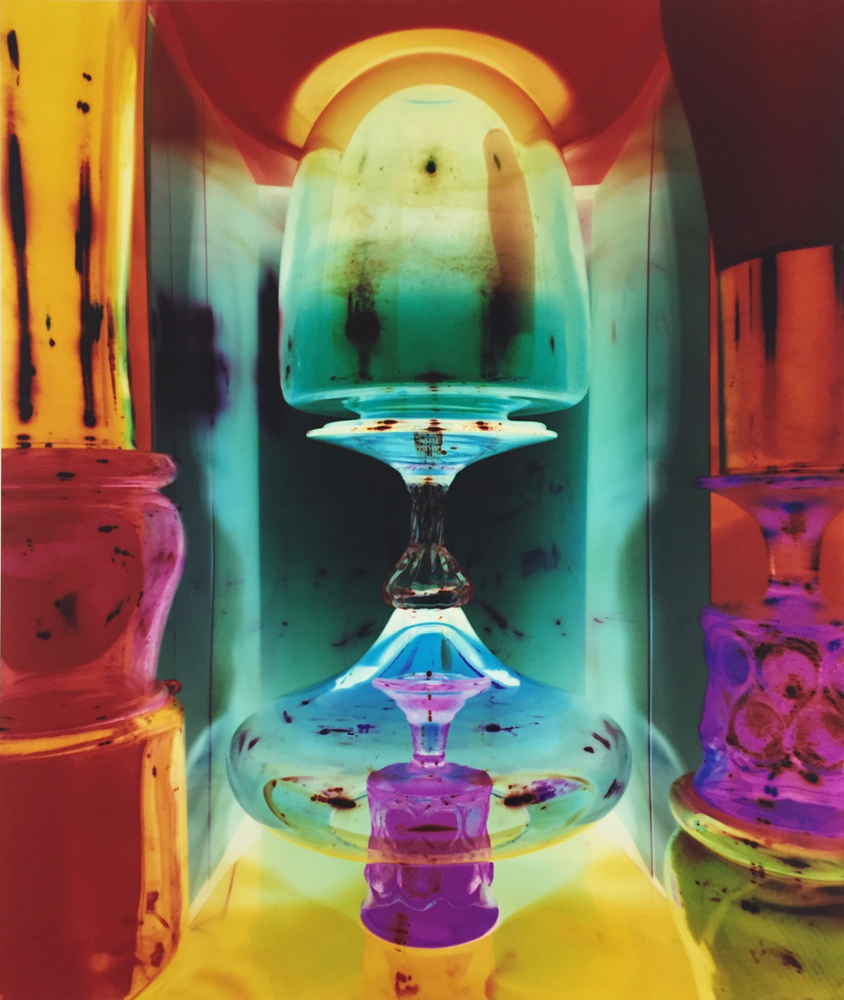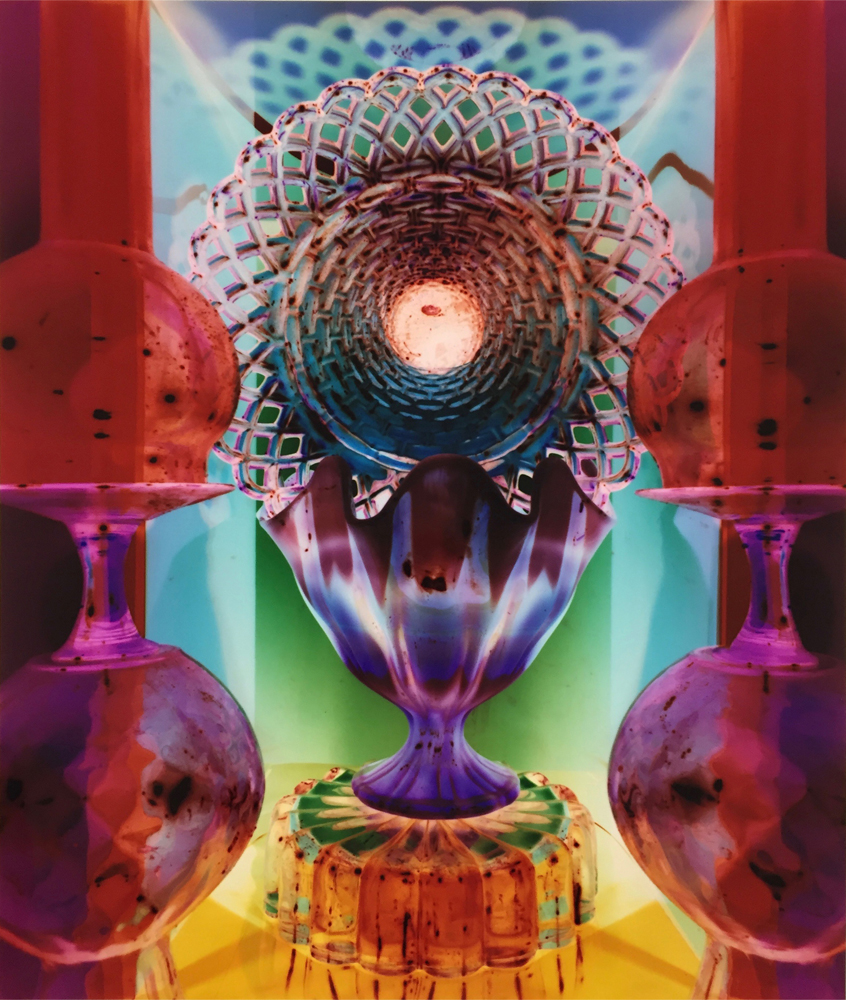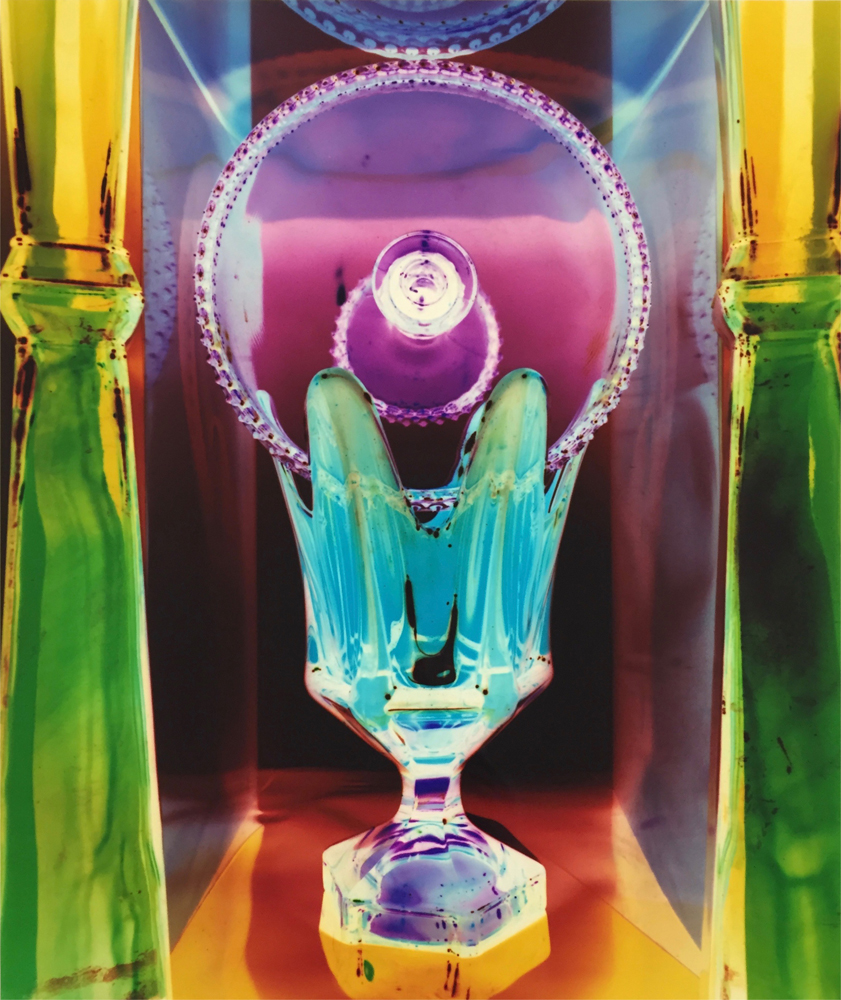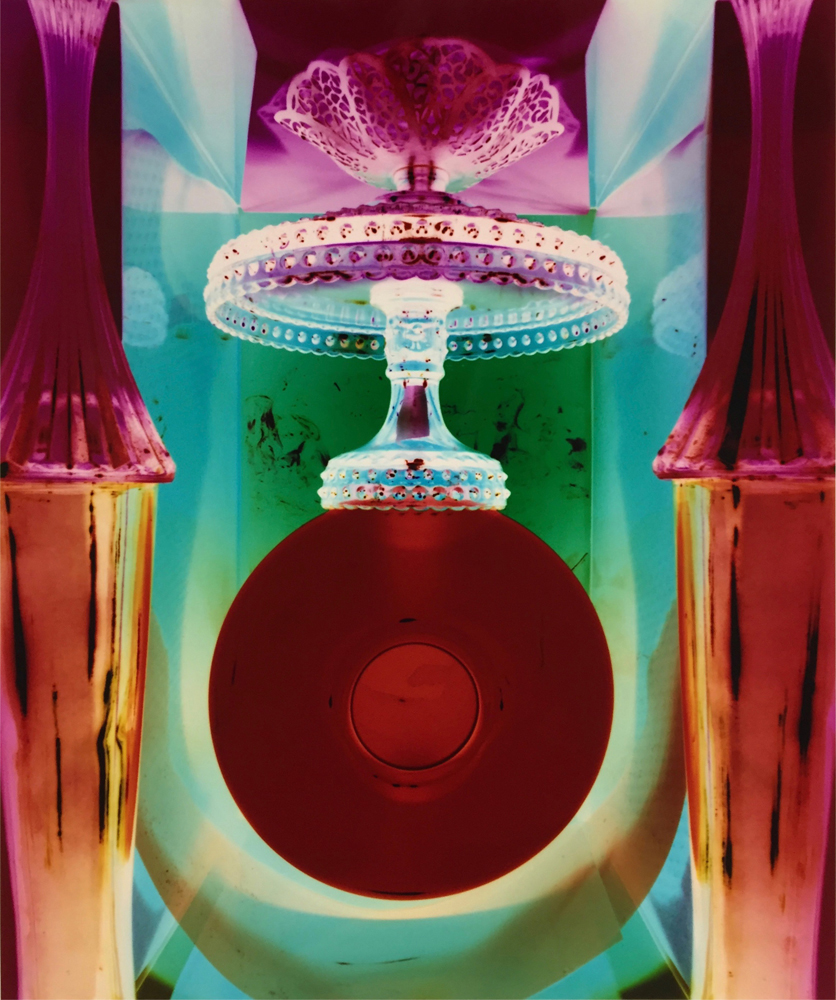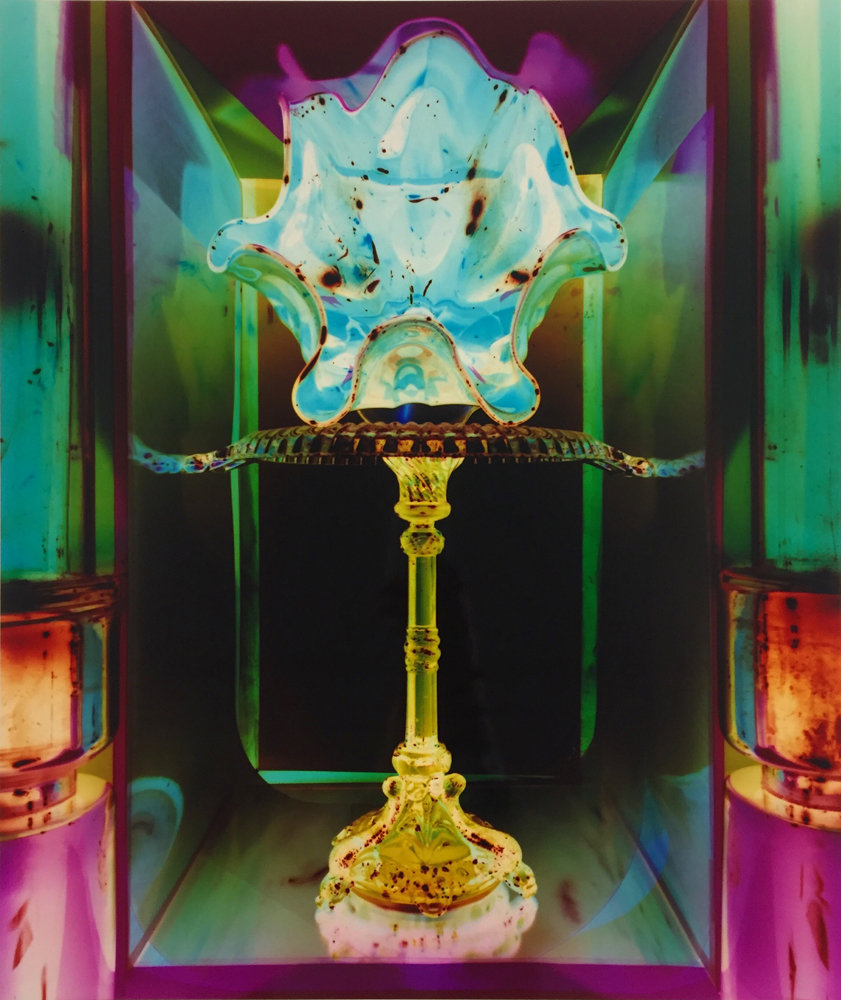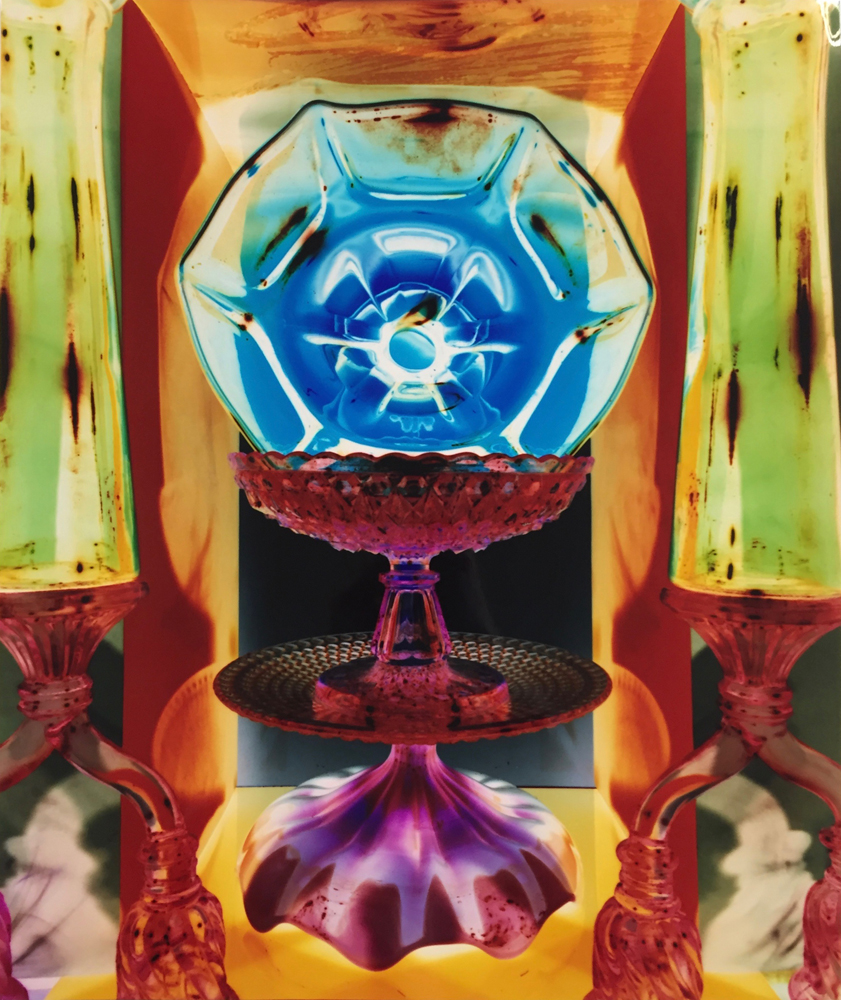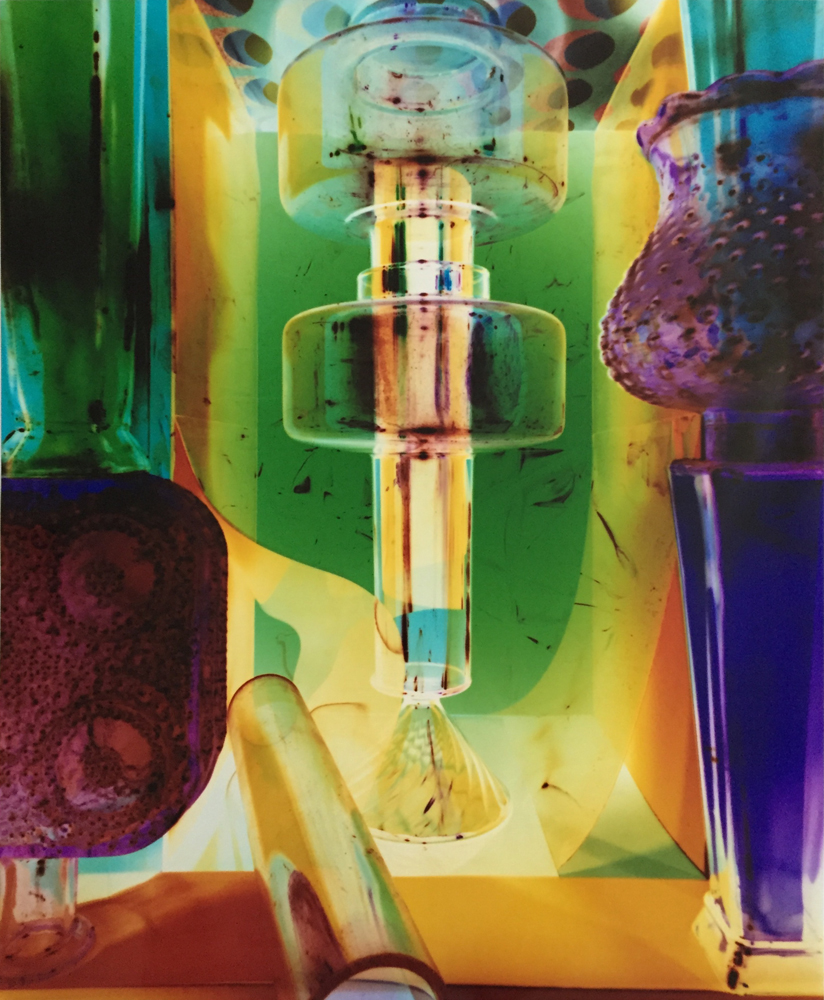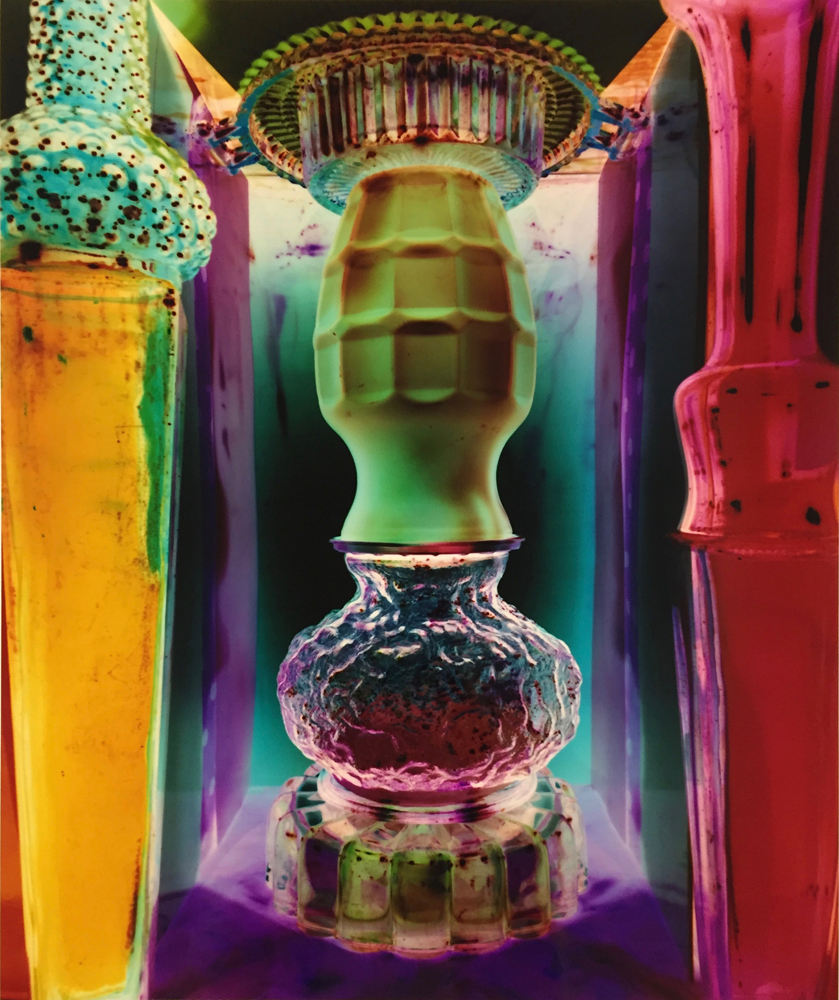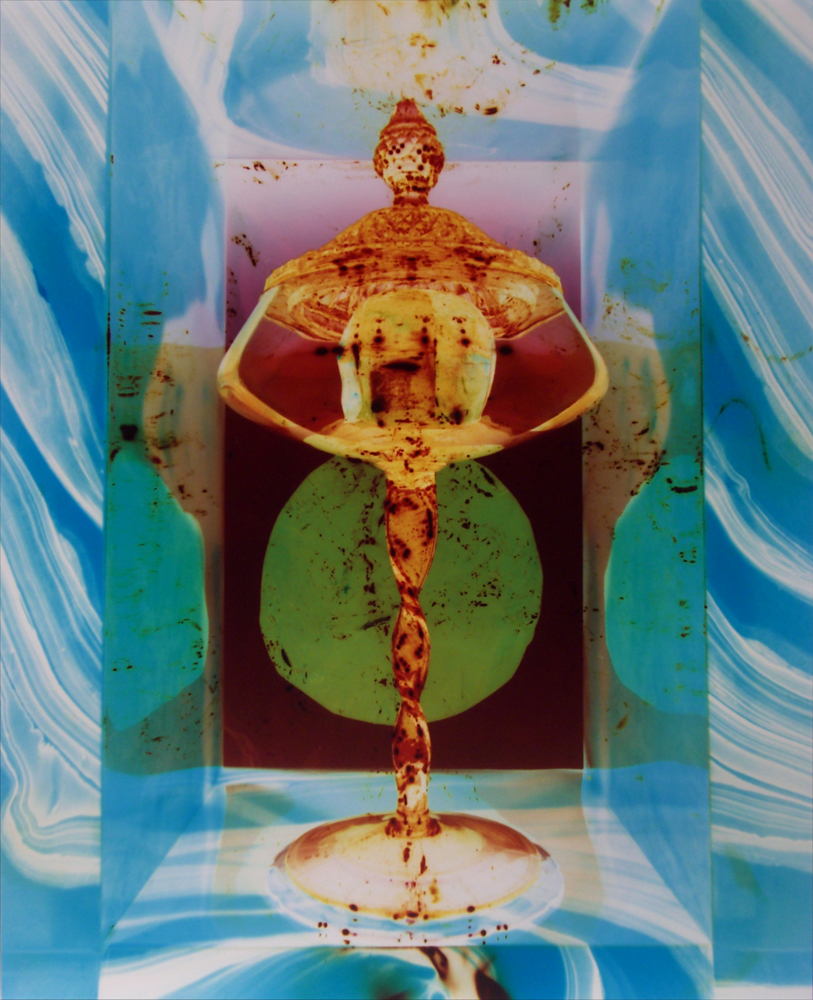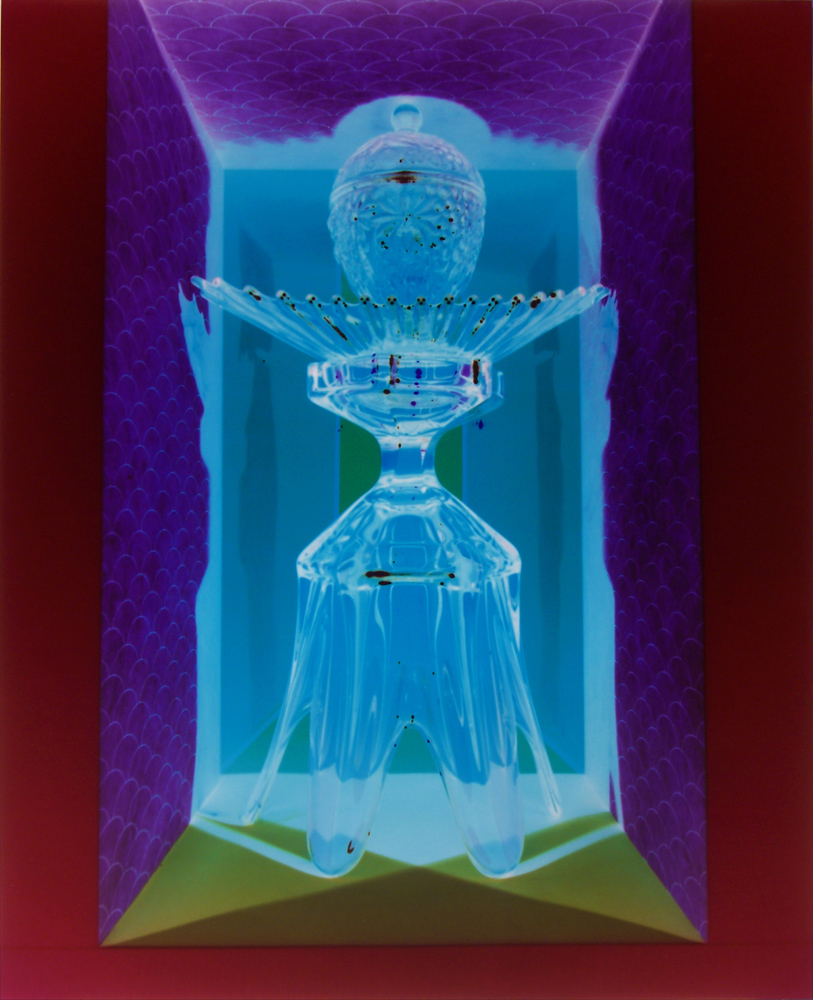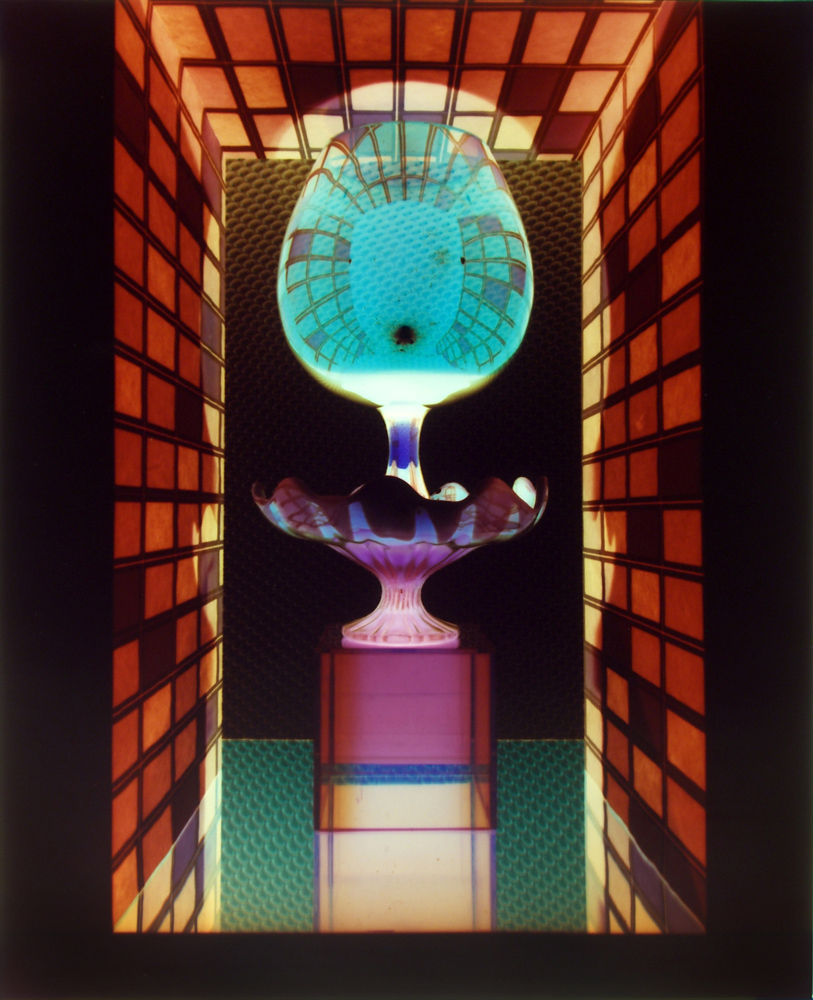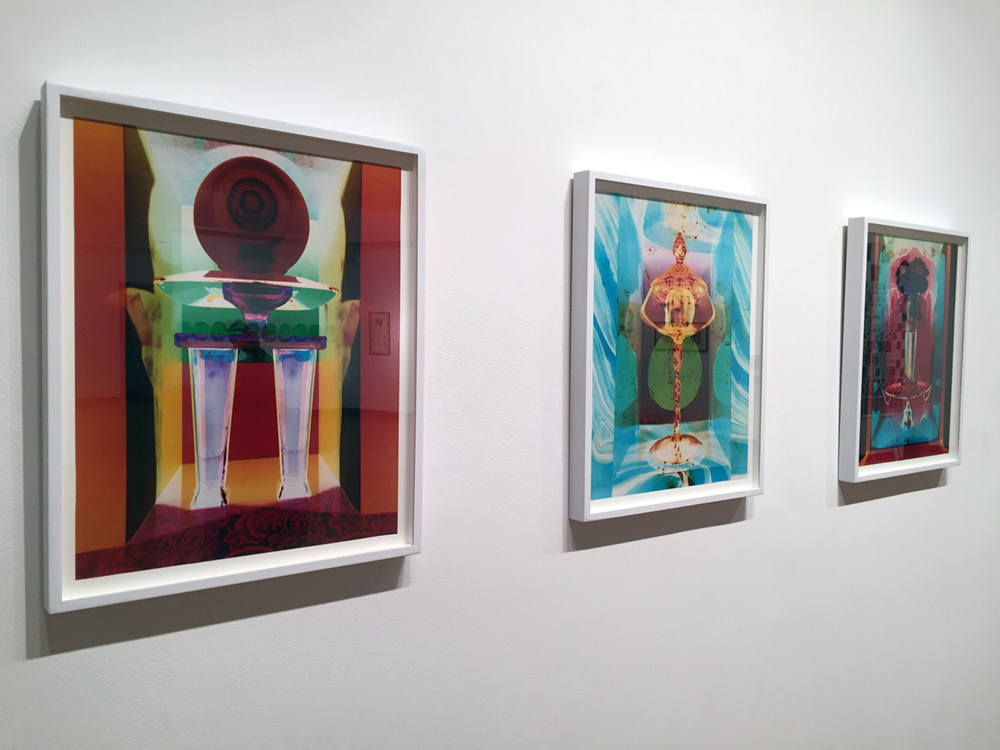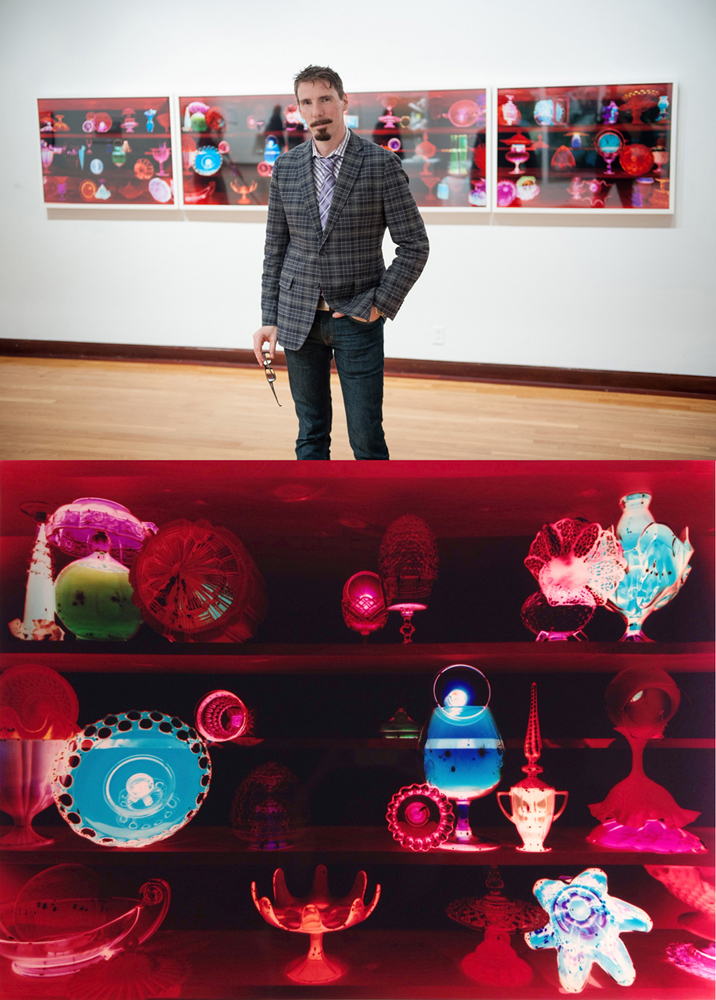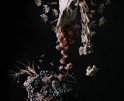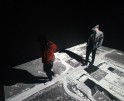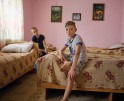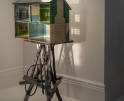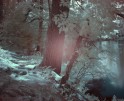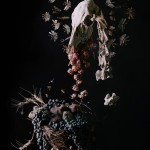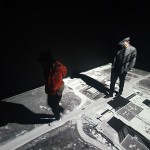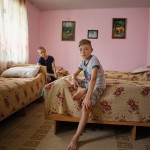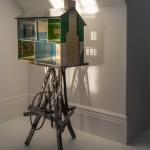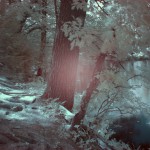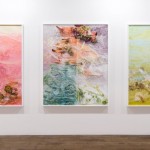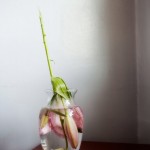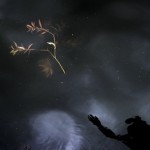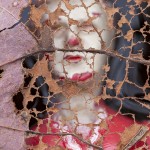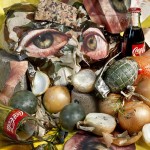Robert Calafiore: Looking Through a Glass, Darkly
I first came across the stunning work of Robert Calafiore when jurying the 2016 Center Forward Exhibition with Hamidah Glasgow for the Center of Fine Art Photography. I loved what I saw on my computer screen during the jurying process, but was not prepared for how I would experience his work in person. Robert’s large scale one-of-a-kind chromogenic prints, of mid-century modern glass objects, took over the gallery, not unlike a massive stained glass window. His work may be a capture of glass, but the photographs are transformational, stained with rich hues and presenting still lifes in a whole new incarnation.
Robert has several exhibitions on the horizon. His photographs are part of a two person exhibition at GALLERY 1/1 in Seattle, WA: Robert Calafiore and Joseph Minek: Color Darkroom Innovators, featuring one-0f-a-kind color prints made with analog photographic methods, running September 21 – November 11, 2017, with Robert giving an artist’s talk on Sat 9/23 from 2-3pm. His work is also included in Size Matters curated by Katherine Ware for Helmuth Projects Gallery in San Diego as part of Medium Photo Festival, opening Oct 28th.
Robert Calafiore was born in New Britain, Connecticut to Italian immigrants. Both his early childhood and young adult experiences have played a significant role in shaping his interests and practice. Raised in a traditional Roman Catholic home, and part of a large extended family, the religious influence and the strong ties to traditions and work ethic, contributed in molding the way he relates to the world. After attending art school for both BFA and MFA degrees, Calafiore has focused on his artist’s practice while administrating, teaching and promoting the fine arts, internally and externally from a university staff and faculty position.
He received his MFA in Photography from the State University of New York at Buffalo and his BFA in Photography from Hartford Art School. Currently he lives and works in West Hartford, Connecticut, exhibiting his work nationally.
Looking Through a Glass, Darkly
I use a hand-built pinhole camera to create large scale one-of-a-kind c- prints. The subject matter currently, a collection of ordinary glassware, some of the first objects purchased by my immigrant parents, are assembled by stacking, shelving and/or balancing pieces into a single tableau, and often within a larger construction. These utilitarian and decorative items, are some of the things I remember vividly in our home growing up. They represent the beginning of a new life in the United States, after leaving behind their homeland of Sicily. These now nostalgic pieces are transformed by the unique recording characteristics of the camera’s wide angle, the extended exposure, set design + composition, and the light sensitive paper’s recording abilities. This new way of seeing in the negative, what can’t otherwise be seen, eludes to my interest in our awareness and observation of the fragile world within and around us.
Carefully physically manipulating the still life during the exposure controls the results; altering the saturation, color, density and translucency of certain areas of the arrangement. My long term interest in process, traditional materials, and the reaction between light and chemistry, as well as the personal and universal stories told through every day objects, drives my work and studio practice. Elevating the ordinary to the extraordinary…the every day to a magical and otherworldly place. In addition, the work recalls the well known 17th century cabinets of curiosity, Henry Fox Talbot’s Articles of Glass, family dining room credenzas, and the church niches etched in my mind from childhood, where objects of importance were revered. The grand architecture and spaces I was exposed to as a child have clear influences on my set building practice and in the way I physically relate to the world.
The light sensitive color paper is exposed to nearly an hour of varied light in excess of 20,000 watts. The f/stop equivalent of the pinhole is f/958, a tiny opening requiring prolonged exposure for the paper to record an image. The process is somewhat of a performance as I move objects, change and shift lighting, dodge and burn areas by casting shadows or funneling additional light to a selected spot, to increase or decrease density. Though I am moving too quickly to be recorded in any discernible way, I am, so to speak, a part of every image and each artwork is in a way, a mini movie, whose hundreds of still frames have been condensed to a single image.
No digital tools or technology are ever used in creating these analog studio and darkroom processed photographs. Increasingly reflecting on the endless flood and speed of changing technology today, I step back and invest in prolonged experimentation, investigation and hands-on making that speak to a change in how we use our hands and bodies. Over the last 20 years, I have noted the change in the physical dexterity of younger generations and in the way we all see, interpret and react to the world around us, given the on-going digital revolution. My personal relationship, awareness and sensitivity to the physical world constantly inform my work. –Robert Califiore
Posts on Lenscratch may not be reproduced without the permission of the Lenscratch staff and the photographer.
Recommended
-
Tara Sellios: Ask Now the BeastsApril 6th, 2024
-
Artists of Türkiye: Eren SulamaciMarch 27th, 2024
-
The International Women in Photo Association Awards: Louise Amelie: What Does Migration Mean for those who Stay BehindMarch 12th, 2024
-
Pamela Landau Connolly: Wishmaker and The Landau GalleryFebruary 27th, 2024
-
Interview with Kate Greene: Photographing What Is UnseenFebruary 20th, 2024

